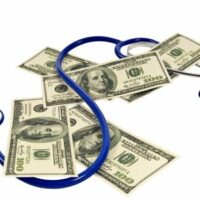Government Report On Medical Debt Creates A Bleak Picture

The government, through the consumer financial protection Bureau (CFPB), has released a report, demonstrating the difficulties and complexities of medical debt, and how damaging it can be to consumers.
Medical debt presents a number of problems and obstacles that consumers normally don’t encounter with traditional credit card debt. According to the CFPB, here is why medical debt is different, and why it creates more problems for consumers
It is unexpected – You generally have control over your debts and expenditures when you use your credit card. But medical events are unexpected and unwanted. Even the most responsible financial consumer can be saddled with medical debt in an instant. This means that you may be seen as a “bad credit risk” based on your credit score, when in fact, you did nothing wrong or irresponsible.
Pricing is often not clear – Although laws have been passed requiring hospitals to disclose pricing, what a procedure or a hospital stay will cost is often not clear to consumers. Add that to in network and out of network pricing, and the pricing schedule gets very complex—and in many cases, the consumer doesn’t even have the choice whether to accept or reject the prices.
Billing timing – In emergency situations, a consumer isn’t given the opportunity to accept or reject charges—the consumer may not be in the condition to do so. They may be ill, not in the mindset to understand what they are signing, and may have no choice but to sign any paperwork that is put in front of them.
Parties involved – With a credit card, it is you and the creditor. But with medical debt, it is often you the medical provider, and the insurance company. Now, you have to navigate insurance policies and regulations, in addition to figuring out who is charging you what for which medical service. The creditors may blame the insurance companies, and the insurance companies often blame the doctors for billing errors. This creates a complex, multi-party web of actors that consumers often cannot navigate.
Medical Debt and Credit
By the time a consumer figures out their bills, what they were charged, why, and whether the billing is even correct—and sometimes it isn’t—the consumer may already find the debt on their credit report. The threat of damaged credit often coerces consumers into paying debts that they may not owe.
In fact, according to the CFPB report, medical debts appear on about 43 million credit reports, and they account for 58% of all collections bills that are on consumer credit reports.
Because of COVID, the situation is expected to get worse—many people deferred non-emergency treatment during the pandemic, and thus, they may be ready to seek out treatment again, which will lead to another rise in medical expenses.
Worse, medical debt seems to be disproportionate to race, with black and Hispanic households having more debt than other ethnicities or races.
Bankruptcy can help wipe out those medical bills. Call the West Palm Beach bankruptcy lawyers at Kelley Kaplan & Eller at 561-264-6850 today.
Sources:
consumerfinance.gov/about-us/newsroom/cfpb-estimates-88-billion-in-medical-bills-on-credit-reports/
acainternational.org/news/aca-international-responds-to-cfpb-report-on-medical-debt/



